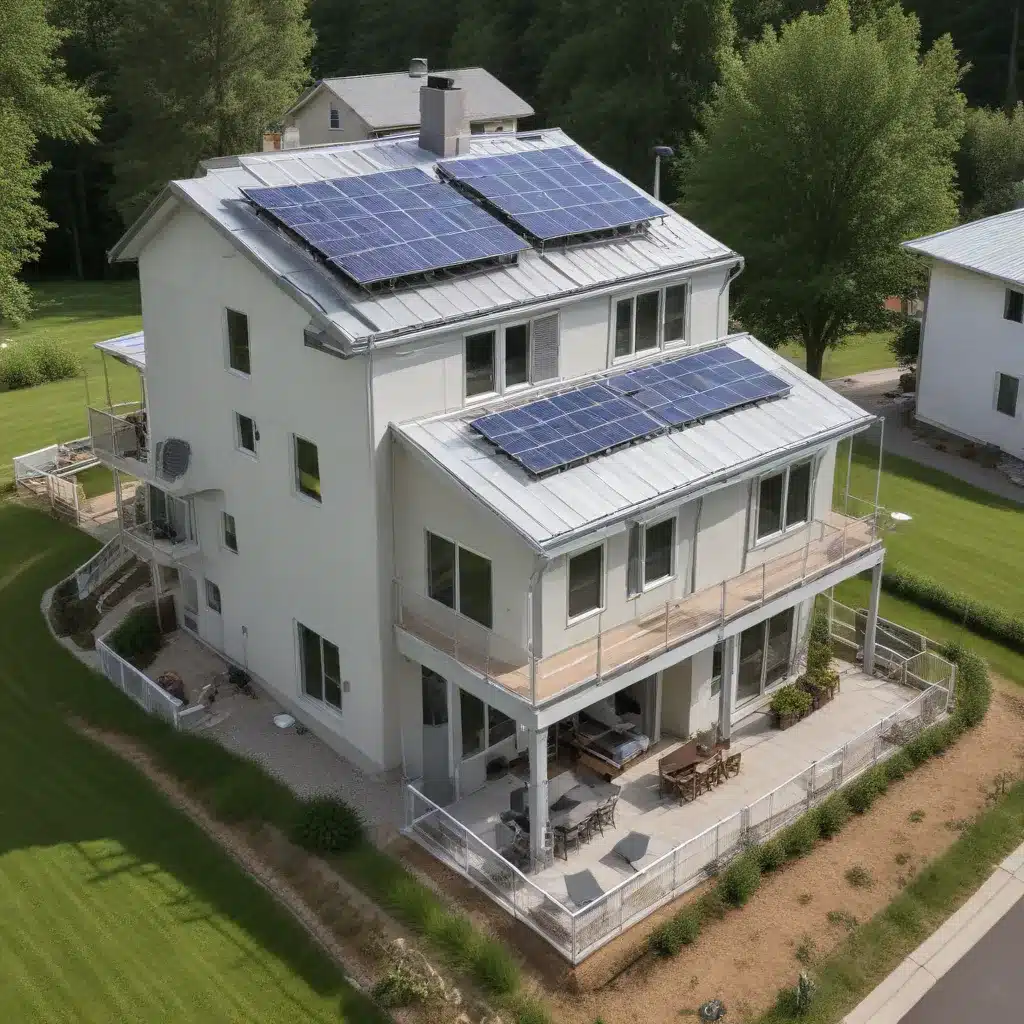
Harnessing the Power of Renewable Energy for Efficient Home Performance
As a seasoned construction professional and interior designer, I’ve had the privilege of working on a wide range of home renovation and building projects. One of the most exciting aspects of my work is the opportunity to help homeowners integrate renewable energy systems seamlessly with their whole-home heating and cooling solutions. In this comprehensive article, I’ll share practical tips, in-depth insights, and expert advice on creating energy-efficient, sustainable homes that harness the power of renewable resources.
Understanding the Whole-House Approach to Energy Efficiency
Before embarking on a home renovation or new construction project, it’s essential to take a whole-house approach to energy efficiency. This means considering all the factors that contribute to a home’s energy use, including the building envelope, heating and cooling systems, lighting, appliances, and renewable energy sources. By addressing these elements holistically, you can maximize energy savings, reduce utility costs, and create a more comfortable, durable living environment.
One of the first steps in this process is to conduct a comprehensive home energy assessment, also known as an energy audit. This evaluation will help you identify areas where your home is losing energy and pinpoint the most effective strategies for improving efficiency. Tools like the Home Energy Score, developed by the U.S. Department of Energy, can provide a detailed analysis of your home’s current performance and recommendations for upgrades.
Integrating Renewable Energy Sources
Once you have a clear understanding of your home’s energy profile, you can begin exploring the integration of renewable energy systems. These can include solar photovoltaic (PV) panels for electricity generation, solar thermal systems for water heating, and geothermal heat pumps for space heating and cooling. By combining these renewable technologies with energy-efficient building practices, you can significantly reduce your reliance on traditional, fossil-fuel-based energy sources.
One of the key considerations when integrating renewable energy systems is ensuring compatibility with your home’s existing heating and cooling infrastructure. For example, a solar thermal system can be designed to work in tandem with a forced-air furnace or a radiant floor heating system, providing preheated water that reduces the load on the primary heating equipment. Similarly, a geothermal heat pump can be integrated with a home’s ductwork or hydronic distribution system to provide efficient, year-round heating and cooling.
Optimizing Heating and Cooling Systems
In addition to incorporating renewable energy sources, it’s crucial to optimize your home’s heating and cooling systems for maximum efficiency. This may involve upgrading to high-performance HVAC equipment, improving insulation and air sealing, and incorporating smart controls and zoning strategies.
One innovative approach is the use of combined heat and power (CHP) systems, also known as cogeneration. These systems generate electricity on-site while simultaneously capturing the waste heat for space heating or water heating. By maximizing the utilization of the energy inputs, CHP systems can achieve overall efficiencies of 80% or more, significantly outperforming traditional, centralized power generation.
Another emerging technology that can enhance the integration of renewable energy and whole-home heating and cooling is the use of district energy systems. These networks of interconnected buildings share a centralized source of heating and cooling, often incorporating CHP and renewable energy components. By leveraging economies of scale and the diversity of energy loads, district energy systems can achieve impressive efficiency gains and reduce the carbon footprint of an entire community.
Navigating the Regulatory Landscape
As you explore the integration of renewable energy and whole-home heating and cooling solutions, it’s essential to be aware of the regulatory landscape. Building codes, zoning regulations, and utility interconnection requirements can vary significantly by location, and it’s crucial to work closely with local authorities and utility providers to ensure compliance.
In some regions, incentives and financial assistance programs, such as tax credits, rebates, or net metering policies, may be available to offset the upfront costs of renewable energy installations. Consulting with a local energy specialist or visiting the https://localbuilderlondon.co.uk/ website can help you navigate these complex considerations and identify the most advantageous options for your specific project.
Designing for Passive Solar and Energy-Efficient Landscaping
Beyond the integration of active renewable energy systems, there are also passive design strategies and landscaping techniques that can contribute to a home’s overall energy performance. Passive solar design, for example, leverages the sun’s natural warmth and light to reduce the need for mechanical heating and cooling. This can be achieved through strategic window placement, the use of thermal mass materials, and the incorporation of shading elements.
Similarly, energy-efficient landscaping can play a crucial role in managing a home’s heating and cooling loads. Well-placed trees and shrubs can provide shading, while carefully selected groundcover and hardscaping materials can help regulate the microclimate around the home. Integrating these passive strategies with the active renewable energy systems can create a synergistic, high-performance home that operates at maximum efficiency.
Conclusion: Embracing the Future of Sustainable Homes
As we move towards a more sustainable future, the integration of renewable energy systems with whole-home heating and cooling solutions is becoming increasingly important. By taking a comprehensive, whole-house approach to energy efficiency and leveraging the latest advancements in renewable technologies, homeowners can create comfortable, durable, and environmentally responsible living spaces.
Whether you’re planning a new home construction project or embarking on a major renovation, I encourage you to explore the possibilities of integrating renewable energy, optimizing heating and cooling systems, and incorporating passive design strategies. By doing so, you’ll not only save on energy costs but also contribute to a cleaner, more sustainable future for your community and the planet.


